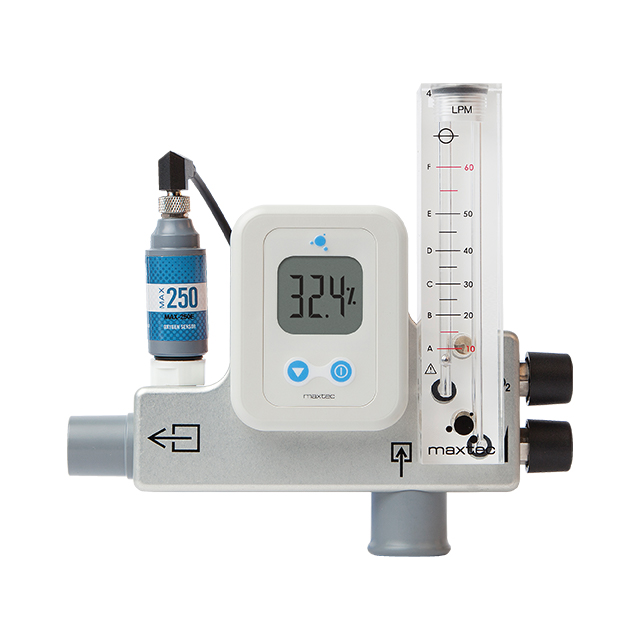In the midst of a respiratory pandemic, treatment options and equipment, especially ventilators, may be scarce. Heated high-flow nasal cannula therapy may be a viable treatment option for respiratory therapy patients. What is it, and why might it be beneficial?
First off, it’s important to determine what high-flow is, and when it would be used. High-flow therapy is when a gas is administered to a patient at a flow rate and minute volume that exceeds the patient’s natural flow rate and minute volume.
“Heated high-flow nasal cannula therapy is often chosen with the intention to avoid the need to put the patient on a ventilator, as it is a non-invasive treatment option.”
Heated high-flow nasal cannula therapy is often a preferred method in a situation where the patient is experiencing shortness of breath and has difficulty maintaining normal blood gases. However, the patient must be able to breathe on their own. Heated high-flow nasal cannula therapy is often chosen with the intention to avoid the need to put the patient on a ventilator, as it is a non-invasive treatment option. While this therapy cannot replace the use of a ventilator, it may prevent a future need for it in each individual’s case.
Why would we want to deliver such a high-flow to a patient? There are three common schools of thought for why heated high-flow nasal cannula therapy may work.
1. It washes out anatomical “dead space.”
Each time a person inhales, they inhale a portion of rebreathed air. Gas exchange takes place in the distal portions of our lungs, which causes the rebreathing effect from the upper airways. A person with healthy lungs can compensate easily for this rebreathing; however, a compromised person with a lung health issue may have a more difficult time and have more shallow breathing. Shallow breathing causes a higher rate of rebreathing. If you can flush the upper airways with fresh gas by administering a high velocity of fresh gas, you prepare the next breath so it is free of rebreathed gas. This is healthier for the lungs to facilitate proper gas exchange.
This is where high-flow therapy comes in: when the patient is administered air at a higher flow rate and minute volume than their normal inspiratory rate and volume, the high-velocity air has a flushing effect to help get rid of excess CO2 in the patient’s airway. This allows the patient’s lungs to fill with more oxygen, eliminating the overabundance of CO2.
2. It creates a sort of CPAP effect to help make breathing less labor-intensive and promote better gas exchange.
Sometimes, people with respiratory issues have difficulties getting air in and out with every breath. Heated high-flow nasal cannula therapy is thought to create positive airway pressure. This pressure helps to keep the air sacs in the lungs from closing completely, making breathing easier and less labor-intensive for the patient.
3. The “heated” and “humidified” elements of heated high-flow nasal cannula therapy may be beneficial for the patient’s lungs.
Oxygen is a cold, dry gas that can be very painful to breathe, especially at high-flows. In a healthy individual, the upper airways act as a filter, heater, and humidifier for the lungs. As air passes through during inhalation, it is conditioned to protect the lungs. Heated high-flow nasal cannula therapy may be beneficial to the patient because of the added heat and humidification. Gas administered in high-flow situations should always be connected to a heating and humidifying device, so the air is conditioned before reaching the patient’s airway. This provides comfortable, gentle, and effective therapy.
For more on this form of therapy, watch this video of Brian and Dustin discussing the topic in more detail.
MAXTEC DOES NOT PROVIDE MEDICAL ADVICE. The contents of Minute With Maxtec are for informational purposes only. Maxtec strives to present readers with the most accurate and up-to-date information, though readers are encouraged to conduct their own research and confirm the information herein with other reputable sources. All information is correct to the best of Maxtec’s knowledge, and Maxtec is not responsible for any errors or omissions. Maxtec reserves the right to edit and change any information on the Minute With Maxtec website at its sole discretion. Reliance on and application of any of the information is solely at the reader’s own risk. Maxtec is not responsible for any results experienced by applying the provided information. Information on Minute With Maxtec is not intended to be a substitute for the examination and advice of a healthcare professional.
